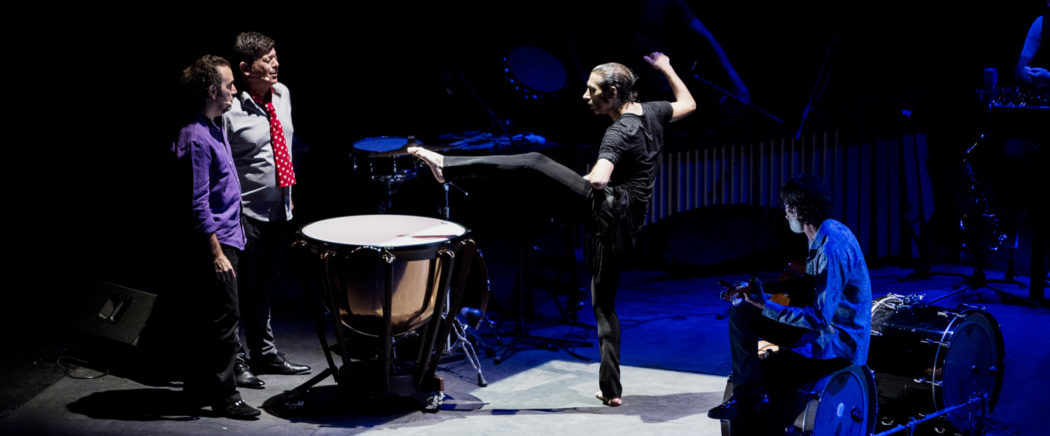Flamenco is a conversation between a singer and a guitarist, who must play something so enticing as to cause the singer to join in; between a singer and the dancer, who much catch the lyric at exactly the right moment to accent rather than overtake the passion of the song; and between the palmeros and everyone else, as the palmeros provide the buoyant backbeat to every note, every chord, every melody, and every improvised step sequence. It is the improvised nature of the conversation, within very strict rules, that makes this musical form so arresting for artists and audiences alike. This conversation has been going on for centuries at weddings and funerals, baptisms and birthdays. Only recently has the party moved onto the stage and in front of international audiences. But Israel Galván Reyes, son of two prominent artists in their own right, isn’t just having a conversation with the other musicians on stage.
Through his revolutionary choreography and orchestration, Galván conducts a complex conversation with past masters and with future generations of flamenco artists. Galván is pushing the evolution of flamenco ever-forward, but with a deep understanding of and respect for its past. There have been many innovators in flamenco, even great modernists like Mario Maya, whose Compañia Andaluza de Danza gave Galván his start. Galván uniquely deconstructs flamenco, exposing its internal structure for the audience, making evident not only the exquisite precision with which each step much match each note, but also the complex social history contained in the dance form.
In Arena (2004), Galván deconstructed gender roles through his examination of the bull ring, performing through dance the exaggerated gestures of the matador until they revealed the deep femininity hiding behind the prison house of masculinity. Just as quickly, though, he fled the prison, becoming the abuela dancing a buleria in front of her family, invoking the apron with a single flourish of his graceful hand. Galván’s choreographies always tell a story. In Lo Real/The Real (2012), with Belén Maya and Isabel Bayón, he conveyed the persecution of the gitanos killed by Nazi forces during World War II.
Galván always brings a singular exuberance and joy to the art of flamenco. He convinces the audience that they could do it too, if he would only bring them on stage. And no matter how avant-garde his footwork, it is always rooted in the flamenco tradition to which he flawlessly pays great tribute.
María Josefina Saldaña-Portillo is an NYU Professor of Latin American, Latinx, and Indigenous studies, author of several books, including “Indian Given: Racial Geographies Across Mexico and the United States” (Duke UP 2016), which won multiple awards, including the 2019 Casa de Las Americas Prize for Latinx Studies. She is also a flamenco dancer and aficionado who has been deeply immersed in flamenco culture for the last thirty years, both in the United States and in Spain.
